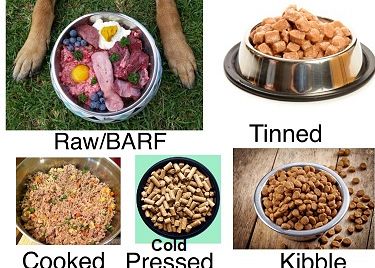29th Apr 2021
FEEDING GUIDELINES AND RECOMMENDED DAILY ALLOWANCE

There is a whole range of different foods available;
- Dry/Kibble
- Wet – Tinned/Packets/Sachets
- Cooked Diet
- Cold Pressed
- Freeze Dried
- Raw (also known as BARF – Biologically appropriate raw food)
When feeding your dog you need to take into consideration their age, weight (do they need to lose weight? gain weight?) and their activity levels.
Most foods will come with ‘feeding guidelines or recommended daily allowance’ (RDA) displayed on the packet which tells you how much to feed for the age and weight of your dog (the exception to this is a raw diet where you feed on body weight %). However if you have a dog that has underlying health conditions or maybe isn’t as active, or maybe you have super active dog that participates in sports, do you need to feed the RDA? It’s quite possible that the guidelines stated for the age and weight of your dog are too much or too little. This is where you need to find the right balance for your own dog. By sticking to the RDA on the packet, you could end up overfeeding your dog which has its own set of issues (please refer to the Canine Obesity posts 1-4), or your dog maybe burning more calories than it’s getting from its food and you notice weight loss. To ensure your dog is at a healthy weight, please refer to Canine Obesity Part 3 to body score your dog.
Puppies, once fully weaned from their mothers up until the age of 12 weeks, will require four meals a day. Once they are 12 weeks, the RDA can be split over three meals. Once a puppy is approximately 10-12 months old, this can be reduced to two daily meals. Some people prefer to just feed their adult dog once a day, but the general consensus is feeding twice a day is better for our canines as going for long periods of time (more than 12 hours) can cause dogs to become hyper acidic which causes nausea.
What many people don’t realise is that dogs get their energy through proteins and fats and not carbohydrates. Although a dog's digestive system produces enzymes that are specific for digesting carbohydrates, it shouldn’t be the main bulk of their diet. Unlike humans, dogs do not produce amylase in their saliva (which is where humans start to break down carbohydrates) with canines it starts much further down their digestive tract in the small intestine and pancreas. Diets high in carbohydrates can, over time put added strain on the dog’s pancreas.
Not all dog food is created equally either, so that is another factor to consider when choosing your dog’s diet. Low quality foods (foods that contain meat and animal derivatives, corn meal, wheat, maize etc.) often have a higher RDA as their nutritional value poor. It’s important to research the quality and nutritional value of the foods you are feeding your dog as diet is just as important to their health as it is our own. A good independent website to refer to is www.allaboutdogfood.co.uk as this lists many different brands of food and gives them a nutritional rating and shows you if the food is above average, average, or below average in protein, fat, fibre, ash and carbs. It also allows you to search foods by your requirements including budget.
Whatever you choose to feed, it’s important to weigh your dog’s food out at each meal time to ensure you are not over feeding or underfeeding – judging what your dog should eat by eye is not reliable.





